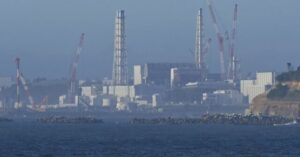The company that operates the damaged nuclear power plant at Fukushima, which was hit by the tsunami triggered by the terrible 2011 earthquake, announced today that it has begun the process of dismantling tanks of treated water to free up space to store radioactive debris.
“Dissolution” work on the tanks “began at 08:05” (local time; at 01:05 GMT), Tatsuya Matoba, a spokesman for Tokyo Electric Power Company (TEPCO), told the French news agency. The start of the operation was delayed for about 24 hours due to strong winds.
The operation, aimed at clearing space to store nuclear debris, is considered an important step in the plan to decommission the plant.
“In order to proceed to the next steps, such as recovering (nuclear) fuel debris, we need space,” Naoki Maeshiro, in charge of TEPCO’s water tank construction and operation project, explained yesterday (Thursday).
The company plans, after these tanks are dismantled, to build storage infrastructure for some 880 tons of highly hazardous radioactive debris and waste that has not even been recovered from the damaged reactors.
TEPCO wants the dismantling of the tanks to be completed before March 2026.
After the giant tsunami, which triggered a 9-magnitude earthquake on March 11, 2011, TEPCO kept a stockpile of about 1.3 million tons of contaminated water – rainwater, groundwater and seawater – stored at the damaged plant, as well as water needed to cool the reactors.
This water, which was treated with the ALPS (“advanced liquid treatment system”) to reduce the level of radioactivity, remains stored in over a thousand tanks. These take up almost the entire site of the plant.
Dismantling the tanks became possible after the discharge of treated water into the Pacific Ocean began in August 2023. Despite strong reactions and concerns, especially from China, both the Japanese authorities and the International Atomic Energy Agency (IAEA) assure that dumping the water into the sea does not harm the environment.
The cleanup, dismantling and final decommissioning of the Fukushima plant will take decades.
Three of the six reactors at the Fukushima plant were operating when the tsunami struck on March 11, 2011, causing their cooling systems to fail and resulting in the worst nuclear disaster in history, since Chernobyl in 1986.
Ask me anything
Explore related questions





